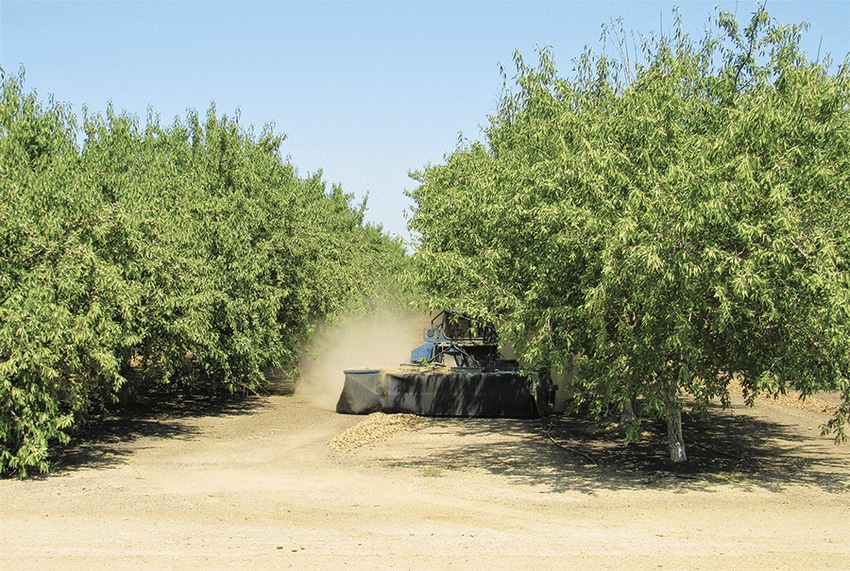
Predicting tree nut production in the years ahead would be like guessing which teams would be in the Super Bowl in any given year. There are far too many variables to consider, any one of which could change without warning.
But growers, the industry-at-large, and especially potential growers thinking about investing in a tree nut orchard are all interested in production potential to help guide them in long-range planning.
Most economists and industry officials are reluctant to proffer a guess about future production levels. As every nut grower knows, success in any given year depends on many circumstances, and production levels depend on things like available acreage for expansion, weather, diseases, water availability, pollinator health, and much more.
There are some — economists and growers alike — who say a reasonable attempt at projecting potential production for the years ahead is possible, as long as one remembers that variable growth conditions can, and often do, alter projected production numbers from year-to-year.
MORE PISTACHIOS
Last month the American Pistachio Growers (APG) released the results of a commissioned economic study and subsequent report that indicated the California industry could potentially be poised to increase production over the next six years.
A recent sanctioned report indicates California’s annual pistachio production could rise from it’s current 940 million pounds to a potential 1.4 billion pounds by 2026.
The study and the report, conducted by Agricultural Economist Edmond Missiaen, warns that this potential can only be reached if the expansion of pistachio acres continues to rise, normal weather conditions prevail, and no major interruptions to water supplies occur.
A search for similar studies conducted for both California almonds and walnuts produced in the state failed to find any 5-6 year production estimates. However, shorter range numbers were uncovered that provide a clouded glimpse into expected trends.
3 BILLION POUNDS ALMONDS
Economists at the 46th annual Almond Conference held in Sacramento last December say, based on the strength of record per-acre yields expected in the future, the state’s almond crop could reach the 3 billion-pound mark over the next five years.
Rabobank analysts estimated California almond acres could reach 1.26 million pounds over the next three years, and beginning as early as this year, record production levels are possible.
As with the pistachio crop, year-to-year variables could nullify those projections, but the analysts say the rise in the demand of almonds, both domestically and especially in the global market, could offset what otherwise might represent a decline in production over the next several years. It would depend, of course, on the nature of the variable — for instance, if weather is unfavorable but not disastrous.
Concerning the expansion of almond and other tree nut crop acres in California, Dr. Daniel Sumner, director of the University of California Agricultural Issues Center at UC-Davis, says it wasn’t too many years ago he could not foresee a great deal of expansion in nut orchards because of the lack of availability of land and water.
But in January he revised his opinion, saying that with the decline in cotton and dairy acres in California in recent years — a trend he says may continue — additional suitable land is becoming available that expand annual production levels.
“There is currently more than 1.5 million acres of tree nuts in California, but there is still a great deal of interest in expanding that number,” he says. “And with more efficient methods of irrigation, areas once considered unsuitable for tree nuts is expanding.”
Sumner says with the decline in dairy farms, acreage traditionally used to produce high-nutrient alfalfa is a prime target for new tree orchards and expansion of existing tree nut operations.
UPTICK IN WALNUTS
After successive dry years, coupled with problems associated with irrigation allocations, some walnut growers removed a number of trees from their orchards in an effort to keep operations fluid. But in more recent times there has been an uptick in total walnut acres, a trend that could continue as long as water issues do not intensify.
According to a report from NASS-USDA, there were just over 400,000 acres of walnuts in 2017, but that also included 65,000 acres of non-bearing acres.
While the latest total walnut project numbers from NASS-USADA show only the 2017 walnut crop at about 630,000 tons, the agency’s prediction for 2018 was at 690,000 tons total on about 350,000 nut bearing acres.
About the Author(s)
You May Also Like






